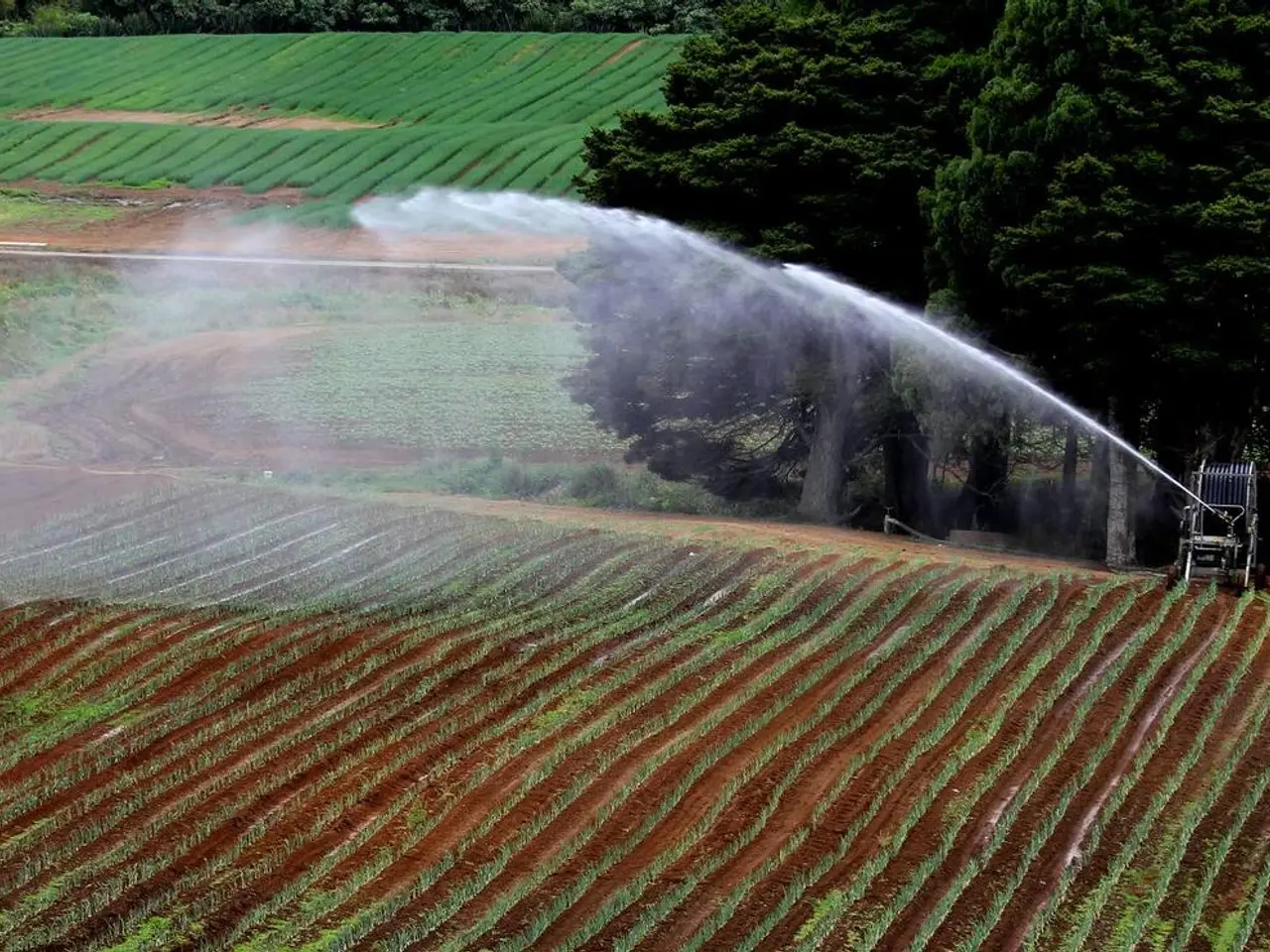Transformed Floodplain Agriculture: Đồng Tháp leverages challenges to cultivate agricultural benefits
In the heart of Việt Nam, Đông Tháp Province is transforming floodplains into a beacon of sustainable development and agricultural modernization. The region, known as Đông Tháp Mười, is rising with the water and adapting to climate change, serving as a powerful testament to the country's resilience.
One of the key factors driving this transformation is the adoption of integrated farming models. In Hậu Mỹ, Mỹ Thành, Thạnh Phú, and Tân Phước communes, residents are no longer resisting floods, but adapting to them. Farmers like Âu Văn On and Mai Thanh Châu have seen significant income increases by adopting a dual-purpose farm model, where they grow rice, lotus, and various aquatic species together.
Farmer Hà Vã Lợi in Mỹ Thành is one such success story. His ornamental fish farm generates an annual profit exceeding VNĐ350 million (about $14,600), a testament to the economic logic of these integrated farming models. Similarly, in Tân Phước 2 and Mỹ Thành, farmers have successfully integrated lotus farming, native fish and snail aquaculture, and ornamental fish farming, with some generating annual profits of over VNĐ1 billion ($41,700).
The success of these models lies in their cultural resonance and alignment with the ecological rhythm of the land. They merge native species, local wisdom, and scientific support into a development strategy uniquely tailored to the flood-prone region.
The region's rich soil and abundant floodwater resources hold enormous promise for sustainable development. Nearly 500 hectares of previously low-performing rice fields have been converted to integrated systems, including rice-fish, fish-lotus, and aquatic nursery farming. New research into breeding and commercial production of native species like striped loach fish is providing higher-value alternatives to traditional crops.
Infrastructure development is another crucial factor in Đông Tháp's transformation. Over VNĐ500 billion (US$20.8 million) has been invested in building flood-resilient infrastructure, including upgrades to embankments, sluices, internal roads, and canals. These improvements have not only enhanced water control but also improved transportation within the province.
Hậu Mỹ, now supplies around 900 million fish fry and over 400 tonnes of fingerlings annually, making it one of the country's leading freshwater fish production zones. The 100-hectare pilot project in Hậu Mỹ demonstrates the rice-fish farming model's potential.
From 2021 to 2025, a structural adjustment plan is being rolled out for crop and livestock production north of National Highway No.1. With appropriate planning, sustainable techniques, and strategic investment, Đông Tháp Mười can move from being a symbol of vulnerability to a showcase of Việt Nam's rural renaissance.
The story of Đông Tháp serves as a powerful testament to Việt Nam's ability to rise with the water and adapt to climate change in the era of agricultural modernization. It is a story of resilience, innovation, and cooperation, and a shining example for other flood-prone regions around the world.
Read also:
- Understanding Hemorrhagic Gastroenteritis: Key Facts
- Stopping Osteoporosis Treatment: Timeline Considerations
- Tobacco industry's suggested changes on a legislative modification are disregarded by health journalists
- Expanded Community Health Involvement by CK Birla Hospitals, Jaipur, Maintained Through Consistent Outreach Programs Across Rajasthan





